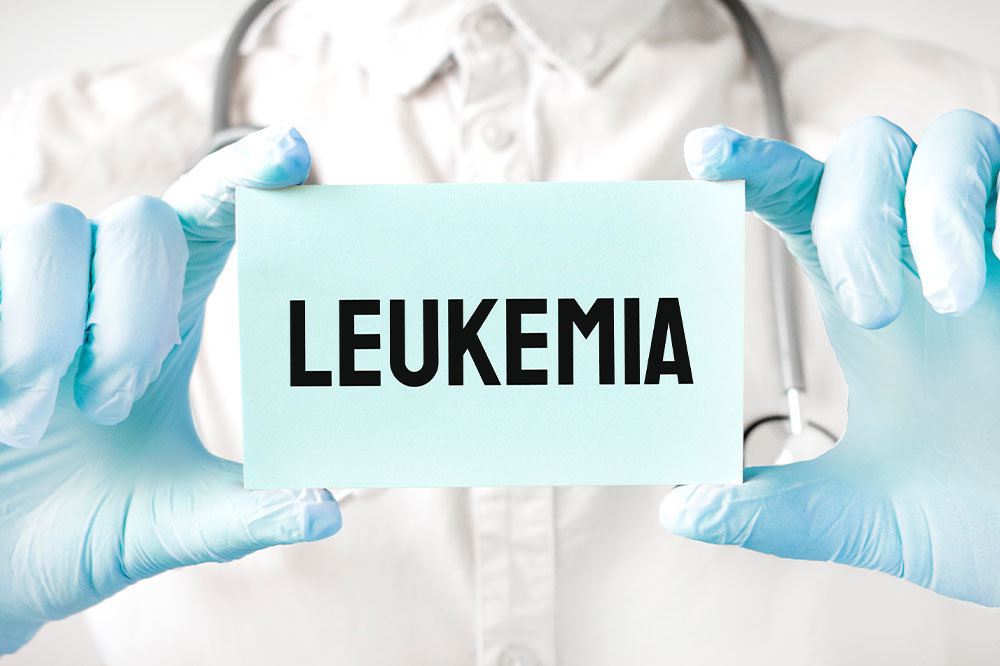
Leukemia types, symptoms, and remedial options
Leukemia is a type of cancer that develops in the blood-forming tissues like the bone marrow or the lymphatic system. It can develop in children as well as adults. In this condition, the bone marrow produces an abnormal number of white blood cells in the body, which do not function properly, leading to health complications. This article looks at the different types of leukemia, its symptoms, and treatment options for the condition.
Types of leukemia
Acute lymphocytic leukemia
The most common type of leukemia, this is observed mostly in children but can also affect adults.
Acute myelogenous leukemia
This is more prevalent in adults; however, it can affect both young children and adults.
Chronic lymphocytic leukemia
It typically develops in older individuals and accounts for about one-third it is observed that people can go years without observing any symptoms of the disease.
Chronic myelogenous leukemia
This also develops more commonly in adults, and grows gradually in the body without showing any signs or symptoms for months or years. However, it then goes through a rapid growth period where the cancer cells spread more quickly.
Rare forms of leukemia
This includes hairy cell leukemia, myelodysplastic syndrome, and myeloproliferative disorder, which includes myelofibrosis. Myelofibrosis is a rare type of leukemia that leads to extensive scarring on the bone marrow. It can create complications like anemia, leading to extreme fatigue and weakness.
Signs and symptoms While the symptoms vary depending on the type of leukemia developed, there are some common signs that need to be observed. These include persistent fatigue and weakness, losing weight without any effort, fever or chills, severe and frequent infections, excessive sweating, especially at night, pain in the bone and feeling of tenderness, and swollen lymph nodes or enlarged liver or spleen. One can also face tiny red spots on the skin, also called petechiae, recurrent nosebleeds, and bleeding or bruising easily.
Since these symptoms can be vague and not specific, they may go unnoticed; however, if you are persistently experiencing any of these, it is time to see a doctor to get a proper diagnosis and treatment options.
Diagnosis
Leukemia diagnosis involves going through some rigorous tests like a physical exam, blood tests, and bone marrow tests, where the doctor will recommend removing a sample of the bone marrow from the hip bone for further testing. The tests can help get a proper diagnosis of the disease, which, in turn, will help the doctor plan the right treatment therapies.
Treatment options
There are several treatment options for leukemia, depending upon the stage of the condition and the prognosis. It also depends on the overall health of the individual. Given below are some common treatment options for the condition.
Chemotherapy
This is the primary form of treatment for those suffering from leukemia. Depending on the type, the treatment can be done either orally or intravenously.
Targeted therapy
As the name suggests, this is a type of treatment where the cancer cells are studied to find any abnormalities within them. Once these abnormalities are found, the treatment starts to block the cells, eventually leading to the cancer cell’s death. Doctors usually do a test at first to see if the leukemia cells can be used for this type of therapy.
Radiation therapy
In this treatment option, the patient is asked to lie down on a table where a machine moves around the body and directs radiation to different, specific points of the body where the cancer cells have spread. These x-rays or high-energy beams are known to damage the cells and kill the cancer cells’ growth.
Bone marrow transplant
Also called a stem cell transplant, it is a treatment option in which healthy stem cells are introduced into the body by replacing the unhealthy bone marrow. These healthy stem cells then regenerate into the healthy, leukemia-free bone marrow. There are also stem cell donors who help with this type of treatment.
Immunotherapy
As the name suggests, the immune system is used to help attack the cancer cells. This is done by revealing the cancer cells to the immune system by destroying the protein that hides these cells from the body’s natural defenses.
Engineering immune cells to fight leukemia
This is another well-advanced treatment in which the body’s germ-fighting T cells are engineered to fight cancer and then infused back into the body to kill the cells.
If the regular treatment options do not work, there is also an option of clinical trials in which new experiments are done to try to eradicate the cancer cells from the body. Always speak to the doctor in detail about the risks and side effects of the ongoing clinical trials for leukemia.




